 In 1980, a relatively obscure director by the name of Don Taylor, who was mainly only known for his directoral efforts Escape from the Planet of the Apes, the original The Island of Dr. Moreau, and Damien, Omen II, made a little science fiction film about aircraft carriers, time-travel, and Pearl Harbor called The Final Countdown. It starred an aging Kirk Douglas, still full of machismo, a young Martin Sheen coming off the heels of his success in Francis Ford Coppola’s Vietnam War epic, Apocalypse Now, and Katherine Ross, whose career was floundering after the success of Butch Cassidy and the Sundance Kid some eleven years earlier. Imagine what would happen if a modern day war machine like an aircraft carrier went back in time to the eve of the Japanese attack on Pearl Harbor in December of 1941. If you were commanding the ship, what would you do? Would you use the tools at your disposal to stop the events of December 7th, “a day which will live in infamy”, from ever happening? Would you be willing to accept the ramifications of the decision to change the future of the world by changing its past? If you were able to go back in time, would you even be able to change the past to begin with? So many conversations had been had by people much smarter than I, so we won’t get too carried away with the possibilities of time travel and what would happen if you stepped on a flower in a pre-historic era, what kind of ripple effect would there be on the present or what would happen if you went back and killed your grandfather before you father was born or killed your father before you were born. It can boggle the mind really, but that’s what makes these types of films so intriguing to me. The following paragraphs give a detailed outline of the story that is The Final Countdown. If you haven’t seen the film yet, skip down to the bottom as to not be spoiled. If you have seen it, I hope I have captured the soul of the film and that you enjoy the read…
In 1980, a relatively obscure director by the name of Don Taylor, who was mainly only known for his directoral efforts Escape from the Planet of the Apes, the original The Island of Dr. Moreau, and Damien, Omen II, made a little science fiction film about aircraft carriers, time-travel, and Pearl Harbor called The Final Countdown. It starred an aging Kirk Douglas, still full of machismo, a young Martin Sheen coming off the heels of his success in Francis Ford Coppola’s Vietnam War epic, Apocalypse Now, and Katherine Ross, whose career was floundering after the success of Butch Cassidy and the Sundance Kid some eleven years earlier. Imagine what would happen if a modern day war machine like an aircraft carrier went back in time to the eve of the Japanese attack on Pearl Harbor in December of 1941. If you were commanding the ship, what would you do? Would you use the tools at your disposal to stop the events of December 7th, “a day which will live in infamy”, from ever happening? Would you be willing to accept the ramifications of the decision to change the future of the world by changing its past? If you were able to go back in time, would you even be able to change the past to begin with? So many conversations had been had by people much smarter than I, so we won’t get too carried away with the possibilities of time travel and what would happen if you stepped on a flower in a pre-historic era, what kind of ripple effect would there be on the present or what would happen if you went back and killed your grandfather before you father was born or killed your father before you were born. It can boggle the mind really, but that’s what makes these types of films so intriguing to me. The following paragraphs give a detailed outline of the story that is The Final Countdown. If you haven’t seen the film yet, skip down to the bottom as to not be spoiled. If you have seen it, I hope I have captured the soul of the film and that you enjoy the read…The Story:
The film starts off in present day 1980 at Pearl Harbor Naval Airbase, Hawaii. A limousine makes its way through the naval yards to an airfield where Warren Lasky (Sheen) is getting ready to board a Naval helicopter bound for what we would later find out is the U.S.S. Nimitz, one the of the floating cities known as Aircraft Carriers. A man jumps out of the front seat of the limousine and introduces himself to Lasky as Mr. Tideman’s assistant. Mr. Tideman is the mysterious gentleman in the back seat that is obscured by the tint of the limousine’s windows. He refuses to introduce himself to Lasky, even though the mysterious fellow seems to have setup his trip to 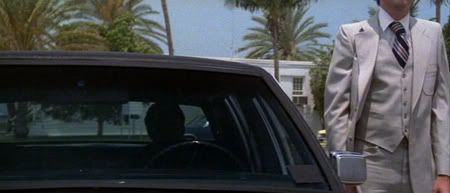 the Nimitz. Lasky boards the helicopter and makes his way to the ship, passing by the Arizona Memorial in the harbor as well as a Russian troller. As Lasky’s helicopter makes its way to the ship, Lasky is whisked away to the bridge to meet the Captain. We get the obligatory shots of an F-14 Tomcat making its approach and landing on the flight deck. We are shown that the pilot of that bird is the CAG (Captain, Air Group), Richard Owens (James Farentino). As Lasky makes his way to the bridge, we find out that he Lasky is a systems analyst, or an efficiency expert as it is called by one Naval Officer. This lends to a bit of tension between Lasky and the crew of the Nimitz, including its Captain, Matthew Yelland (Douglas). We find out that the Nimitz’s cruise was delayed two days as Mr. Tideland setup to have Lasky join the crew for the outing.
the Nimitz. Lasky boards the helicopter and makes his way to the ship, passing by the Arizona Memorial in the harbor as well as a Russian troller. As Lasky’s helicopter makes its way to the ship, Lasky is whisked away to the bridge to meet the Captain. We get the obligatory shots of an F-14 Tomcat making its approach and landing on the flight deck. We are shown that the pilot of that bird is the CAG (Captain, Air Group), Richard Owens (James Farentino). As Lasky makes his way to the bridge, we find out that he Lasky is a systems analyst, or an efficiency expert as it is called by one Naval Officer. This lends to a bit of tension between Lasky and the crew of the Nimitz, including its Captain, Matthew Yelland (Douglas). We find out that the Nimitz’s cruise was delayed two days as Mr. Tideland setup to have Lasky join the crew for the outing.
 the Nimitz. Lasky boards the helicopter and makes his way to the ship, passing by the Arizona Memorial in the harbor as well as a Russian troller. As Lasky’s helicopter makes its way to the ship, Lasky is whisked away to the bridge to meet the Captain. We get the obligatory shots of an F-14 Tomcat making its approach and landing on the flight deck. We are shown that the pilot of that bird is the CAG (Captain, Air Group), Richard Owens (James Farentino). As Lasky makes his way to the bridge, we find out that he Lasky is a systems analyst, or an efficiency expert as it is called by one Naval Officer. This lends to a bit of tension between Lasky and the crew of the Nimitz, including its Captain, Matthew Yelland (Douglas). We find out that the Nimitz’s cruise was delayed two days as Mr. Tideland setup to have Lasky join the crew for the outing.
the Nimitz. Lasky boards the helicopter and makes his way to the ship, passing by the Arizona Memorial in the harbor as well as a Russian troller. As Lasky’s helicopter makes its way to the ship, Lasky is whisked away to the bridge to meet the Captain. We get the obligatory shots of an F-14 Tomcat making its approach and landing on the flight deck. We are shown that the pilot of that bird is the CAG (Captain, Air Group), Richard Owens (James Farentino). As Lasky makes his way to the bridge, we find out that he Lasky is a systems analyst, or an efficiency expert as it is called by one Naval Officer. This lends to a bit of tension between Lasky and the crew of the Nimitz, including its Captain, Matthew Yelland (Douglas). We find out that the Nimitz’s cruise was delayed two days as Mr. Tideland setup to have Lasky join the crew for the outing.Immediately, a clear, sunny day turns to unexplained electrical storms. We see and hear a radioman pick up a radio transmission from the Russian troller Lasky’s helicopter had passed over earlier sending out the position of the Nimitz. Lasky is escorted to his quarters, which happen to share a door with Captain Owens and intrudes on Owens’ quarters and we find out that Owens has a serious interest in the bombing of Pearl Harbor by the Japanese in 1941 and is writing a book on the subject. As the storm gets closer, Black Cloud (Victor Mohica), the onboard weatherman, shows Captain Yelland an anomaly on the scope inside the storm. Meanwhile, there is a young pilot with a damaged aircraft trying to make 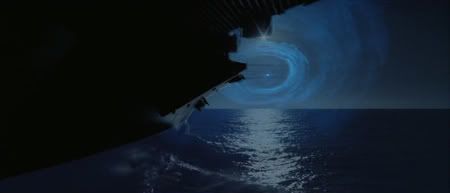 an emergency landing in the storm and the Nimitz inches closer and closer to the anomaly. Well, the Nimitz passes through the anomaly and as the crew regains their bearings, they realize that they’ve lost the damages aircraft’s position so Captain Yelland calls for general quarters. They make a visual on the aircraft and bring it in safely. Yelland makes the standard checks of communication and radar, but even though all equipment is working properly, they’ve lost contact with Command at Pearl Harbor, the rest of the ships and the fleet, any other contacts within Naval Command, and even the Russian troller. With this, Yelland sends out a radar aircraft (E-2 Hawkeye) and an A-7 Corsair to take a visual survey of Pearl Harbor. Meanwhile, they are trying to decipher what exactly is going on, as they are picking up obsolete coded radio transmissions as well as old Jack Benny radio broadcasts. The A-7 pilot returns his visual survey of Pearl Harbor stating that everything looks intact, but that there is some unusual shipping traffic.
an emergency landing in the storm and the Nimitz inches closer and closer to the anomaly. Well, the Nimitz passes through the anomaly and as the crew regains their bearings, they realize that they’ve lost the damages aircraft’s position so Captain Yelland calls for general quarters. They make a visual on the aircraft and bring it in safely. Yelland makes the standard checks of communication and radar, but even though all equipment is working properly, they’ve lost contact with Command at Pearl Harbor, the rest of the ships and the fleet, any other contacts within Naval Command, and even the Russian troller. With this, Yelland sends out a radar aircraft (E-2 Hawkeye) and an A-7 Corsair to take a visual survey of Pearl Harbor. Meanwhile, they are trying to decipher what exactly is going on, as they are picking up obsolete coded radio transmissions as well as old Jack Benny radio broadcasts. The A-7 pilot returns his visual survey of Pearl Harbor stating that everything looks intact, but that there is some unusual shipping traffic.
 an emergency landing in the storm and the Nimitz inches closer and closer to the anomaly. Well, the Nimitz passes through the anomaly and as the crew regains their bearings, they realize that they’ve lost the damages aircraft’s position so Captain Yelland calls for general quarters. They make a visual on the aircraft and bring it in safely. Yelland makes the standard checks of communication and radar, but even though all equipment is working properly, they’ve lost contact with Command at Pearl Harbor, the rest of the ships and the fleet, any other contacts within Naval Command, and even the Russian troller. With this, Yelland sends out a radar aircraft (E-2 Hawkeye) and an A-7 Corsair to take a visual survey of Pearl Harbor. Meanwhile, they are trying to decipher what exactly is going on, as they are picking up obsolete coded radio transmissions as well as old Jack Benny radio broadcasts. The A-7 pilot returns his visual survey of Pearl Harbor stating that everything looks intact, but that there is some unusual shipping traffic.
an emergency landing in the storm and the Nimitz inches closer and closer to the anomaly. Well, the Nimitz passes through the anomaly and as the crew regains their bearings, they realize that they’ve lost the damages aircraft’s position so Captain Yelland calls for general quarters. They make a visual on the aircraft and bring it in safely. Yelland makes the standard checks of communication and radar, but even though all equipment is working properly, they’ve lost contact with Command at Pearl Harbor, the rest of the ships and the fleet, any other contacts within Naval Command, and even the Russian troller. With this, Yelland sends out a radar aircraft (E-2 Hawkeye) and an A-7 Corsair to take a visual survey of Pearl Harbor. Meanwhile, they are trying to decipher what exactly is going on, as they are picking up obsolete coded radio transmissions as well as old Jack Benny radio broadcasts. The A-7 pilot returns his visual survey of Pearl Harbor stating that everything looks intact, but that there is some unusual shipping traffic.Also, a surface contact is detected on radar, so a couple of F-14s are sent out to get a visual identification. We pan to the surface contact, which is just an old-style yacht with a U.S. Senator, Samuel Chapman (Charles Durning) and his aide, Laurel Scott (Ross) taking a mid-day cruise. The people on board see something on the horizon, thanks to the barking of Laurel’s dog, Charlie. They have no idea what they are witnessing, as the two F-14s scream by overheard. The odd radio transmissions continue with broadcasts of unrecognizable boxing fights and what seem to be nostalgic commercial advertisements. Everyone, trying to figure out what exactly is going on, seems to think that with Lasky’s appearance on board, that it might be some type of training mission to test their readiness. Finally, the reconnaissance photographs from the A-7 have been developed and to the disbelief of Yelland, Lasky, and Owens, the photos are of the fleet in Pearl Harbor just prior to the Japanese bombing on December 7th, 1941. Meanwhile, two air contacts appear on radar and the two F-14s sent to identify the surface contact that turned out to be a luxury yacht, identify the air contacts as two “mint condition” WWII Japanese Zeroes. Yelland, still thinking this is some sort of extreme training exercise, asks for suggestions on how to proceed. Lasky presents one possible explanation that hasn’t been addresses so far, that all of these events are actually happening, that they have traveled through time back to 1941. The naval officers have a real hard time accepting this as a possibility, basically dismissing it and continuing their investigation into what is really happening.
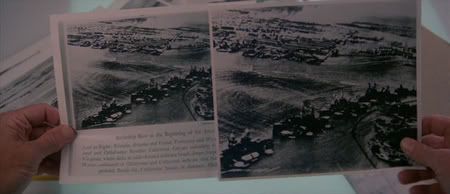
We return to the yacht cruising in the Pacific as the two Japanese Zeroes fly overhead. Seeing the American flag, the Zeroes circle around and make a strafing run on the yacht, killing the captain of the yacht and one of Senator Chapman’s friends. The two F-14s request permission to fire on the Zeroes, but Yelland refuses their request. The Zeroes make a couple more passes, destroying the yacht and killing one of the survivors. Finally, Yelland gives permission to engage the Zeroes but not to fire. The F-14s toy around with the Zeroes for a while, and the Japanese pilots have no idea what to make of these futuristic jet aircraft 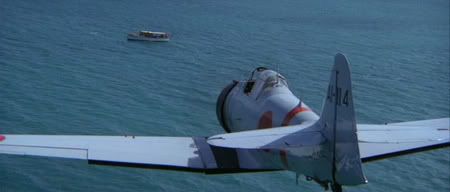 so they open fire on one of the Tomcats. During this cat and mouse game, Yelland has dispatched some aircraft to get a visual on where the Japanese fleet may have been if they were in fact in 1941 instead of 1980. With confirmation of the Japanese fleet’s location, Yelland finally comes to the realization that they are, in fact, in 1941 the day before the Japanese attack on Pearl Harbor, so he gives permission to fire on the two Zeroes, both being destroyed with one pilot surviving. The survivors from the yacht as well as the Japanese pilot are rescued and returned to the Nimitz, and as Commander Scott is helping the survivors of the yacht off the rescue helicopter, he is introduced to Senator Chapman and gets a look on his face like he’s seen a ghost.
so they open fire on one of the Tomcats. During this cat and mouse game, Yelland has dispatched some aircraft to get a visual on where the Japanese fleet may have been if they were in fact in 1941 instead of 1980. With confirmation of the Japanese fleet’s location, Yelland finally comes to the realization that they are, in fact, in 1941 the day before the Japanese attack on Pearl Harbor, so he gives permission to fire on the two Zeroes, both being destroyed with one pilot surviving. The survivors from the yacht as well as the Japanese pilot are rescued and returned to the Nimitz, and as Commander Scott is helping the survivors of the yacht off the rescue helicopter, he is introduced to Senator Chapman and gets a look on his face like he’s seen a ghost.
 so they open fire on one of the Tomcats. During this cat and mouse game, Yelland has dispatched some aircraft to get a visual on where the Japanese fleet may have been if they were in fact in 1941 instead of 1980. With confirmation of the Japanese fleet’s location, Yelland finally comes to the realization that they are, in fact, in 1941 the day before the Japanese attack on Pearl Harbor, so he gives permission to fire on the two Zeroes, both being destroyed with one pilot surviving. The survivors from the yacht as well as the Japanese pilot are rescued and returned to the Nimitz, and as Commander Scott is helping the survivors of the yacht off the rescue helicopter, he is introduced to Senator Chapman and gets a look on his face like he’s seen a ghost.
so they open fire on one of the Tomcats. During this cat and mouse game, Yelland has dispatched some aircraft to get a visual on where the Japanese fleet may have been if they were in fact in 1941 instead of 1980. With confirmation of the Japanese fleet’s location, Yelland finally comes to the realization that they are, in fact, in 1941 the day before the Japanese attack on Pearl Harbor, so he gives permission to fire on the two Zeroes, both being destroyed with one pilot surviving. The survivors from the yacht as well as the Japanese pilot are rescued and returned to the Nimitz, and as Commander Scott is helping the survivors of the yacht off the rescue helicopter, he is introduced to Senator Chapman and gets a look on his face like he’s seen a ghost.Later, Yelland conferences with his head officers and Lasky to discuss their options. Do they attack the Japanese fleet with the firepower of a modern day aircraft carrier at their disposal? What would the ramifications be of attacking the Japanese fleet on the past, the present, or the future by stopping the attack on Pearl Harbor from ever happening? They discuss time paradoxes, things get heated, and Yelley decides that the mission of the Nimitz is to protect the United States and its assets, no matter what timeline they are in, and sets in motion an attack on the Japanese fleet. I’ve had similar conversations with friends when it comes to any film, book, or TV show involving time travel and paradoxes. It usually gets much more heated and detailed than the one taking place in this scene, as it wasn’t very detailed at all actually.
Meanwhile, Lasky is escorted back to his quarters and sneaks back into Scott’s quarters, rifling through his notes for his book. Scott confronts Lasky, reading a passage stating that Senator Chapman was killed in the attack prior to the Nimitz’s intervention and that had he survived the attack, he would most likely become President of the United States after Roosevelt’s passing a few years later. Lasky requests that he meet the Senator and in doing so, sets in motion the Japanese pilot being held prisoner acquisitioning a machine gun, killing two Marines, and holding Lasky, Scott, Chapman, and Laurel hostage. There are some attempts at rescue, the Japanese pilot requests the use of a radio, Laurel is taken at gunpoint, and Scott is prompted to explain, with the use of a translator, the events that were getting ready to happen the next day. It distracts the Japanese pilot just enough that he lowers his guard and is killed. Senator Chapman, hearing this, starts getting suspicious and demands to talk to someone at Pearl Harbor. Yelland grants him this access and Chapman explains his situation. Obviously, no one believes his story and his curiosity only heightens at this point so he requests to be returned to Pearl Harbor so he can discuss the situation with command at the base. Yelland agrees and sends them on their way, but after they leave, instructs Scott to leave them on a deserted island outside of the main chain of islands.
Meanwhile, the rest of the crew of the Nimitz are preparing to go to battle still thinking they are in the midst of World War III. Yelland finally explains the situation to the crew and tells them they are going to use they superior fire power to attack and hopefully destroy the Japanese fleet before they have a chance to attack Pearl Harbor. Insert obligatory shots of crew and equipment throughout the ship here! Cut to the helicopter landing at the deserted island outside of Hawaii and Chapman coming to the realization that he isn’t being taken to Pearl Harbor. Chapman decided to take matters into his own hands, stealing a flare gun while no one is looking and forcing the pilot to take him to Pearl Harbor. There is a fight for control of the flare gun, it goes off, and the helicopter is destroyed. With this turn of events, Cmdr. Scott is stranded on the island with Laurel. Back on the Nimitz, Yelland gives the command to turn the ship into the wind and launch all fighters. As soon as all fighters are in the air, the anomaly that sent them back in time reappears! Yelland orders to change course, and the anomaly changes course with them, so he orders all fighters to return to base. Reluctantly, they scrub the mission and begin their return to the Nimitz as it reenters the anomaly. We’re given a nice little montage of the archive footage on the Japanese attack on Pearl Harbor, showing us that the events of December 7th, 1941 still took place. All aircraft successfully return to the Nimitz and it makes its way back to Pearl Harbor, sailing past the Arizona Memorial yet again. With its return, Yelland is left to try to explain the events of the past few days to his commanding officers. Lasky, with dog on leash, departs the ship to a waiting limousine, the same limousine from the beginning. The door opens, the dog runs to the back of the car and you hear a female’s voice call the dog’s name. Lasky goes to the door thinking it will be Mr. Tideland, but in fact it is Cmdr. Scott and Laurel, aged 40 years from the last time he’d seen them just a few minutes earlier.
Conclusion:
Now, this film is a bit different than most time travel films in that it doesn’t really try to explain the science behind how they were able to travel through time, just showing what would happen in a specific scenario involving time travel and what decisions we might make given the knowledge of what is to come. Yes, there are some flaws in logic and continuity (like the fact that the photo taken from a modern camera in 1980 would have been a helluva lot more in focus and cleaner looking that the archive image Scott was using for his book) and it’s not the prettiest looking film ever, especially for a science fiction film, but it was the early ‘80s and despite that it has seemed to age much better than most science fiction films of its era. Also, it has some of the best in-flight cinematography of F-14s and other Navy aircraft as well as onboard filming of aircraft carrier life. They also got the terminology and jargon correct for the most part which is rare! I love this film in many ways, being formerly stationed on an aircraft carrier in the US Navy, a novice history buff on WWII, and also a Sci-Fi nut, so I recommend this film to everyone I know! Not many people have ever heard of this film, let alone seen it, so if you fall into this category and have any interest whatsoever in time travel, WWII, modern military hardware, the attack on Pearl Harbor, Kirk Douglas, or Martin Sheen, go out and pick this up as soon as possible. You won’t be disappointed…
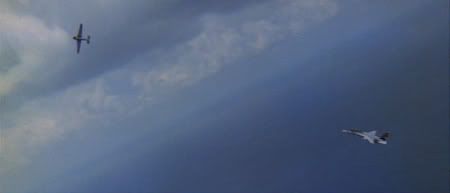
Trivia:
• Filmed in the Atlantic, not the Pacific Ocean (where it takes place). The USS Nimitz was an Atlantic fleet ship until the summer of 1987 when it was transferred to the Pacific. USS Kitty Hawk (CV 63) stood in for the Nimitz for the arrival past the 'Arizona' into Pearl Harbor. (Note: I was actually stationed on the Kitty Hawk during my 2 years in the Navy)
• Filmed during the Nimitz' Sep 79-May 80 cruise. Squadrons aboard included VF-41 and VF-84 (F-14A Tomcats), VA-35 (A-6E Intruder), VA-82 and VA-86 (A-7E Corsair II), VFP-63 (RF-8G Crusader), VAQ-134 (EA-6B Prowler), VS-24 (S-3A Viking), VAW-112 (E-2B Hawkeye), and HS-9 (SH-3H Sea King). All squadrons get time on film.
• Reportedly, the filming wrapped early on the U.S.S. Nimitz as it was recalled to its home base so that it could take on the helicopters and crew that were used in the ill-fated "Operation Eagle Claw", the attempt to rescue the U.S. Embassy Iranian Hostages in 1980.
• The script called for the Japanese pilot to try to force the F-14 into the water. The pilot who basically did a hammerhead and pulled out real close to the water was Richard "Fox" Farrell (VF-84 XO), now retired. He did kick up quite a bit of seawater and was really pushing the envelope with the Tomcat. WWII ace-in-a-day Archie Donahue was one of the Zero pilots. The Zeroes (converted AT-6 Texans) were flying with the throttle to the stops and the F-14s were flying at stall speed (note wings fully extended in most scenes). That was so they could get both aircraft in the same shot at the same time (remember, no CGI stuff back then!).
• The time travel storm is the same special effect as seen in The Lathe of Heaven (1980) during the climatic dream sequence confrontation.
• Thanks to the cooperation of the United States Navy, real F-14A Tomcats flying off the Nimitz were used in filming. Portraying the enemy aircraft in the movie were specially-modified AT-6 Texans, mocked up to look like the famous A6M2 Mitsubishi Japanese Zero of World War II infamy.
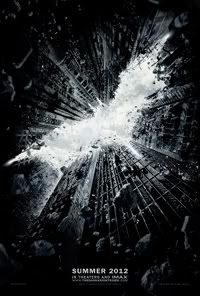

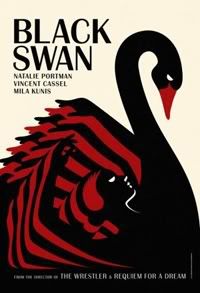
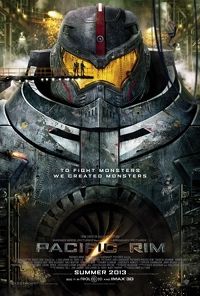
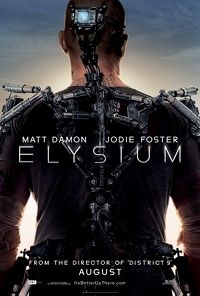

0 Comments:
Post a Comment